A common mistake that people often make when buying painting tools is picking the wrong brush. The wrong painting tool can make painting your home a tedious and tiring process. However, shopping for the right painting tool may be easier said than done. When you’re surrounded by brushes of different sizes, materials, shapes, brands and prices, it’s no wonder that you’d be clueless when finding the right brush for your painting needs! Here are some features that you need to pay attention to when shopping for the right tool.
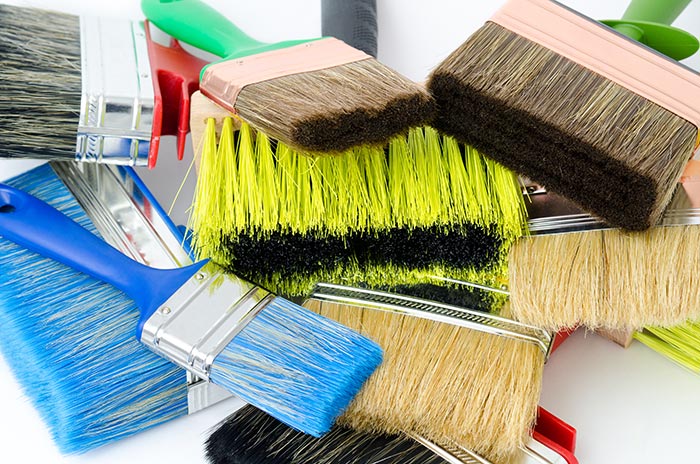
Source: withGod/https://image.shutterstock.com/z/stock-photo-many-new-wide-paint-brushes-over-white-106610666.jpg
Brush Type
In general, there are two types of brush bristles: natural and synthetic. Natural bristles are made of animal hairs, making it suitable for oil-based paints. Natural-bristle brushes, such as Nippon Paint Superior Paint Brush, have bristles with split ends to hold more paint and give your paint job a sleek finish.
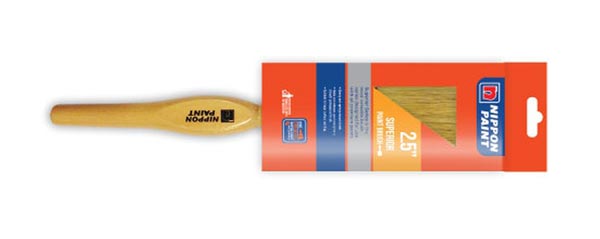
Nippon Paint 2.5″ Superior Paint Brush
Synthetic bristles are usually made of polyester. Synthetic-bristle brushes are best used for latex paints as they can hold their shape and stiffness better when applying paint.
A combination of both natural and synthetic bristles gives you a blended-bristle made of both nylon and polyester. The sturdiness of nylon and polyester’s ability to retain shape make for a well-rounded and highly durable brush. Like polyester brushes, these brushes are great for latex paints on almost all surfaces.
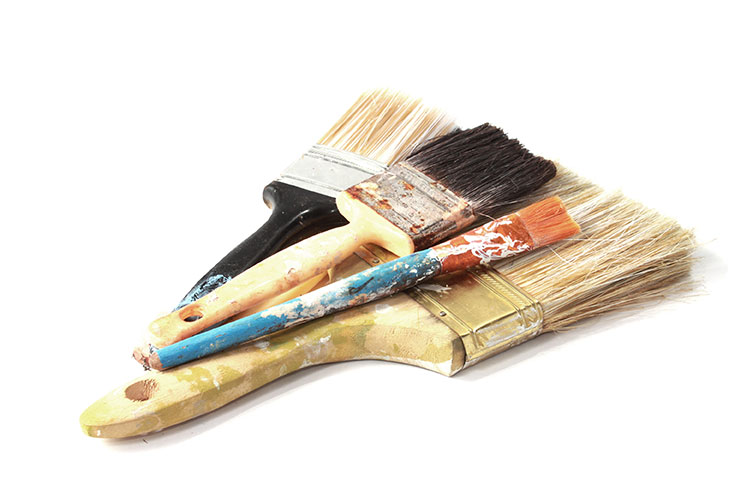
Source: val lawless/https://image.shutterstock.com/z/stock-photo-paint-brushes-on-white-119694031.jpg
<h4
While choosing a brush size seems simple enough, many people may still get it wrong. Choosing a brush size requires more thought than simply grabbing the first brush you see. Apart from considering the size of the surface that you want to paint, you also need to think about the complexity of details that you will be applying to your painting surface. Bigger doesn’t always mean better. Always pick a brush that is slightly smaller than your painting surface. Use a smaller brush for intricate details so that you can coat trims evenly. Here are some points of comparison:
• 1 – 2 inch: window and small trims
• 3 inch: doors and shelves
• 4 inch: large smooth surface
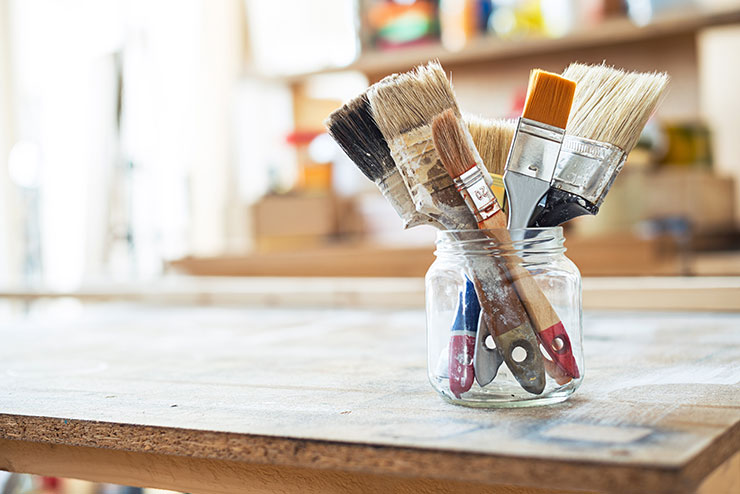
Source: donatas1205/https://image.shutterstock.com/z/stock-photo-paint-brushes-on-the-table-in-a-workshop-310459538.jpg
Bristle Shape
Different bristle shapes make for different painting results. For a flat, smooth surface, a square trim brush will work best as its straight cut will help to paint your surface evenly. When painting the edges of walls and windows, an angled brush will come in handy. If you need to paint a smaller area, a chisel trim brush is your best bet. It comes with a flat, narrow head, hence its name. This shape helps to make a straight line on the edges and corners of the walls.
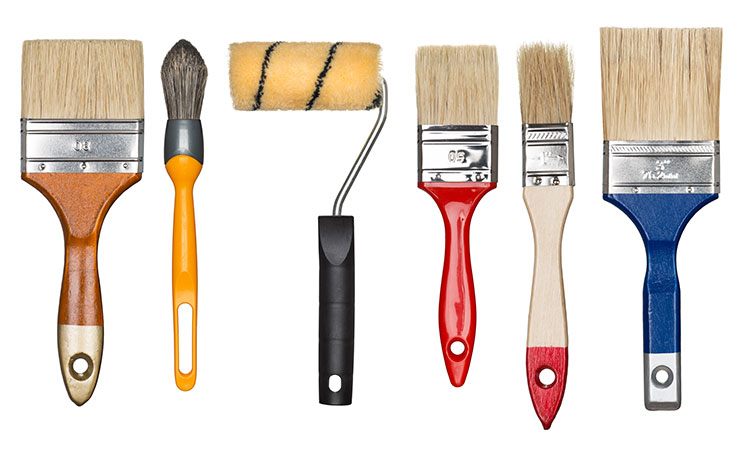
Source: donatas1205/https://image.shutterstock.com/z/stock-photo-painting-tools-paint-brushes-and-roller-1017768898.jpg
Considering the bristle material, brush size and bristle shape is essential in picking the right paint brush for your next DIY project. Nevertheless, you need to have an idea of the type of paint and surface you will be using even before selecting the brush. Do not use one brush for multiple types of paint and facades.
The quality of your brush also determines the result of your paint job. If you want your brushes to last longer, invest in several brushes of high quality.
Now that you are ready to purchase painting brushes, what other painting tools do you need? Make sure have all of them prepared before starting your paint job.
Why Choose Low VOC Paint
